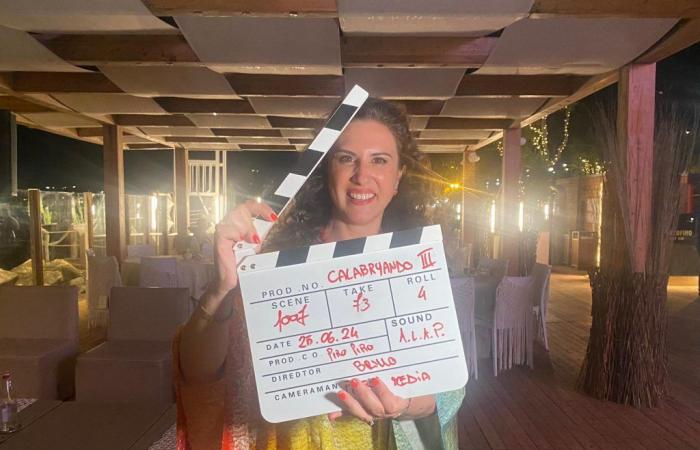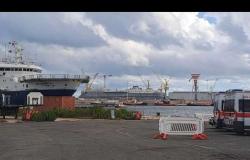by Carmen Autuori
Absolute protagonist of Calabryandoan event created by the food and wine journalist Joanna Pizzi now in its third edition, it was the disruptive positive and proactive energy of those who believe, invest and communicate, but above all love, their land.
The magnificent structure of the Pino Pino in Reggio Calabria nestled between the Lungomare Falcomatà, better known as the most beautiful kilometer in Italy, and the waters of the Strait of Messina, on the horizon the Sicilian coast. The elegant wooden structure, perfectly inserted in the landscape (it is removed in the winter season and then reassembled and made usable in the summer) has recently been included in the “Guide to the best beach clubs in Italy”, and is a point of reference for the people of Reggio, and not only, both for the welcome and for the gastronomic proposal curated by the chef Marco Maltesebehind important collaborations with the starred Nino Rossi, Luca and Antonio Abbruzzino and Carlo Cracco, all under the careful guidance of Domenico e Laura Bellantonioowners of the restaurant and passionate storytellers of their Calabria as much as Giovanna Pizzi who it would be reductive to define exclusively as a food and wine journalist, however excellent a professional she is.
Giovanna is, in reality, a bundle of positive energy with a single goal: to bring out the best of her land, from food and wine (in 2011 she was the best sommelier in Calabria) to the beauty of the landscape. A passion that has distinguished her since childhood “in my house even the snack had to be a complete meal according to my mother, while I always remember my father with a food guide on the dashboard of the car every time we were traveling” she tells us. In essence she is an important communication resource, whose enthusiasm, supported by great theoretical and practical preparation, emerged during the lively and interesting chat that she moderated with the support of the journalist Francesco Mannarinomanaging to shed light on issues of great interest.
The idea for this format was born from a chat with Domenico and Laura a few years ago, starting from the consideration that in 2017 Calabria had been cited by the New York Times, the only one in Italy, among the fifty best tourist destinations in the world. The news was a surprise especially for the Calabrians themselves, accustomed as we were to being narrated mainly for news stories. So we thought of telling (and telling ourselves) with examples starting from this structure that is a jewel in the crown of our region. We involved producers, restaurateurs, pizza chefs and the response has always been characterized by great enthusiasm. Calabria is not just ‘Nduja and chili pepper, but much more both in terms of food and wine and landscape. We have three extraordinary national parks that are the Theyil Chicken and theAspromonte, precious treasure chests of biodiversity, but also manufacturing activities which, starting from our most ancestral traditions such as that of terracotta and textiles, are exporting the Calabria brand to the world. Tonight, for example, they are among us Emilio Leoof the historic wool mill of Soveria Mannelli which has revived the ancient art of spinning and weaving and Vitaliano Papillo who will tell us about the wonderful terracottas of Gerocarne.
Our desire is also to promote synergistic communication, which is why we involved journalists and communicators from the sector and beyond, starting from local ones because effective communication must start from those who trample the territory, every day. They are the ones who have to convey to the outside world an idea of Calabria that doesn’t feel sorry for itself. A Calabria which is at the center of the Mediterranean cannot ignore all this.>>.
The stories
Calabryando is not only a showcase of products, but also a container of stories: every excellence has a face, because it is always man who becomes the guardian of nature’s gifts.
Let’s start from Teresa Maradeiowner of the Terraegusto company that grows the white poor bean, a Slow Food Presidium and intermunicipal De.Co. of the municipalities of Mormanno, Laino Borgo and Laino Castello, in the Pollino National Park. It is an ancient cultivar that is characterized by its thin skin that makes it particularly delicate and its high protein value (about 26%). A small family business born from her need for a deep connection with nature that brought her back, Teresa is a doctor in forestry sciences, in the heart of her Pollino.
>
From Pollino we move to the Sibari Plain, precisely to Villapiana, an uncontaminated salty territory particularly suitable for rice cultivation. Here the sisters Maria, Giusi and Sara Praino created the rice mill in 2004 Alonean acronym born from their initials. Artisan techniques, great respect for the environment, are the coordinates of this company that extends over approximately 350 hectares. The product is characterized by a varietal bouquet of seven varieties. In 2020, Jemma was born, which means birth, a brown rice with strong hints of popcorn, particularly versatile so much so that it is also very suitable for preparing sushi.
Still in the Cosenza area, another excellent product: figs Colander, in Belmonte Calabro. Here, Dino Colavolpe is the heir to a tradition that has lasted for more than a century. It all began in 1910 with grandfather Nicola, of Amalfi origins, engaged in the trade of wood and foodstuffs to Calabria, before being conquered by the fig of the ‘dottato’ variety, which grew in abundance and completely spontaneously in that part of Calabria and the enormous expanses of citrus fruits. Nicola decided to bet everything on the potential of a poor but strongly identifying fruit: thus the Crocette were born, dried figs, stuffed with orange peel, citron and walnuts and composed in the shape of a cross. Today the Colavolpe company is also known beyond national borders precisely for the high quality of its products with the typical cross shape to which, over the years, Fioroni, dried figs covered in dark and milk chocolate, have been added.
Moving to the Ionian side in the province of Reggio Calabria we find Mammola, a town of about 3000 inhabitants that, thanks to the stockfish, has become a destination for real food and wine tourism, just think that there are sixteen restaurants that offer this specialty.
Giuseppe Alagna, owner of the Alagna & Spanò company founded in 1987, carries on the tradition of totally artisanal processing: dried stockfish coming from the Lofoten islands in Norway and the water from the Mammola springs which, thanks to particular chemical-physical characteristics, guarantees an excellent production process rehydration. The result is a product of rare goodness appreciated both in Italy and abroad.
And then the Sugo alla Corte d’Assise, born by chance in 1958 from the creativity of the chef of the “Da Rocco” restaurant of the D’Agostino family in Marina di Gioiosa Jonica: San Marzano tomato, oil, garlic and very spicy Calabrian chilli pepper. Today La Cascina 1899 by Salvatore Agostino aims to make this preparation the identifying sauce par excellence of Calabria.
Calabria is also pizza. In Montepaone in the province of Catanzaro, Roberto d’Avanzo and Anna Rotella with their Bob Alchemy in Segmentsamong the fifty best pizzerias according to the 50 Top Pizza guide, are another example of entirely Calabrian success.
As we said, Calabryando is not just food and wine but also nature tourism. The testimony of the “women of the woods” is precious, Noemi Evoli for the Aspromonte national park, Noemi Guzzo for that of the Sila and Simona The White Fai director for the Giants of Sila, passionate guides and skilled communicators of the invaluable biodiversity heritage of the Calabrian mountains.
And still on the subject of nature tourism, the Catasta del Pollino in Morano Calabro could not be missed, one of the first tourist hubs represented by Giovanni Gagliardi and Manuela Laiacona
The evening will conclude with a four-handed dinner by resident chef Marco Maltese and chef Christian Balzo from the Michelin-starred restaurant Piano 35 in Turin with a Calabrian contamination theme, from grouper tartare, podolica heart and Cirò reduction to Sibari carnaroli with scampi, Spilinga ‘Nduja and Reggio Calabria bergamot, from the fake Albacore curl with lemon stockfish tripe to the Calabrian black pork coppa with Ciminà caciocavallo and Tropea red onion. To conclude, tomato semifreddo, salted bergamot and cucumber in syrup. All in collaboration with Veliera leading company in the distribution of quality drinks.
And just to make sure you don’t miss out on anything, the famous and award-winning ice cream from “Cesare”.






